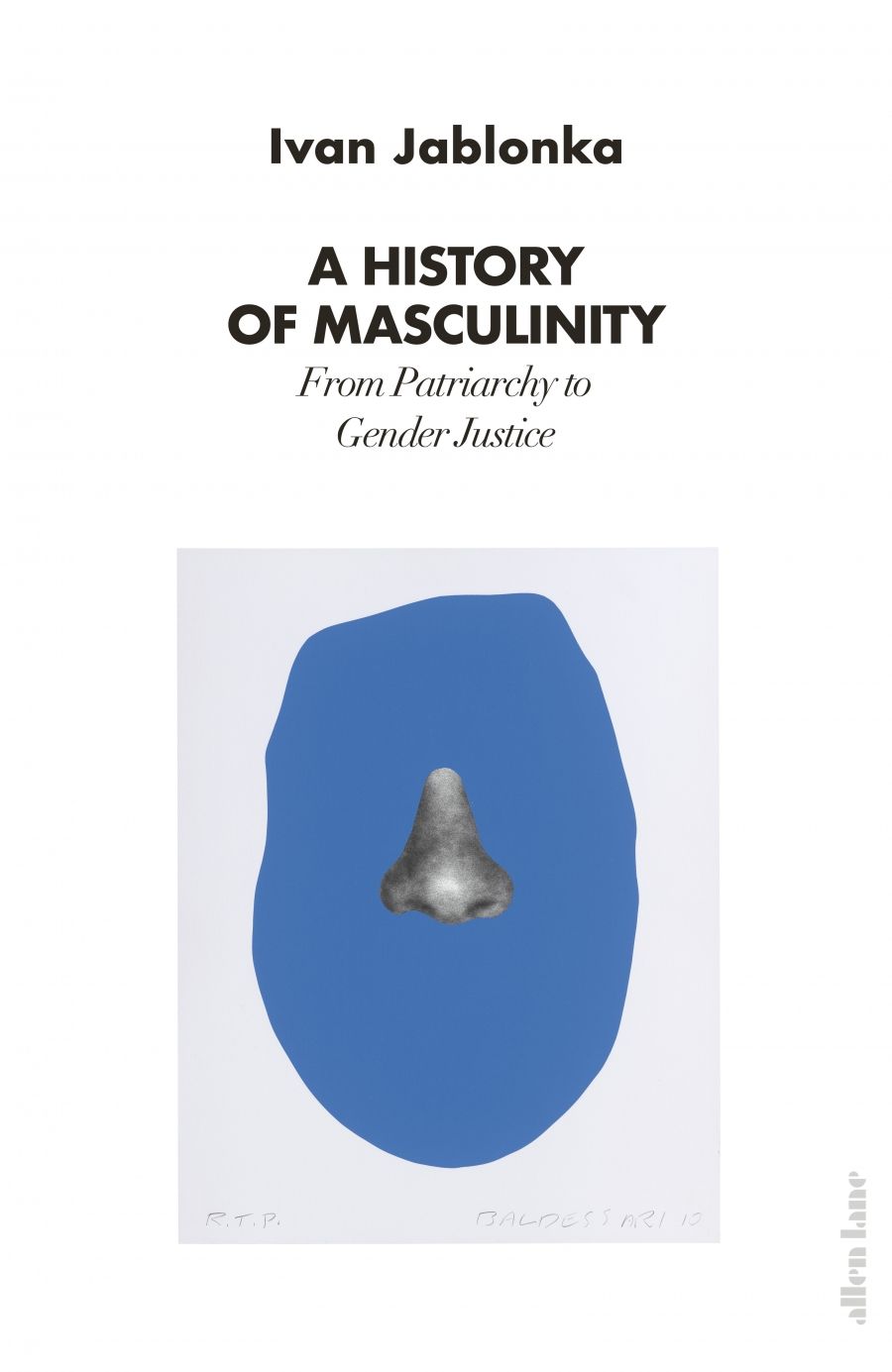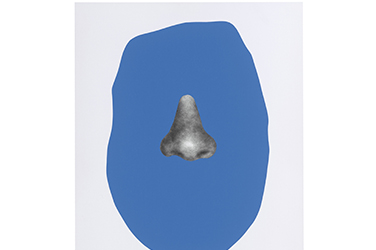
- Free Article: No
- Contents Category: Gender
- Review Article: Yes
- Article Title: Good guys
- Article Subtitle: Challenging the model of virility
- Online Only: No
- Custom Highlight Text:
A History of Masculinity begins with the observation that we live in a global patriarchy that restricts the rights and freedoms of women, and that remedying this situation is a matter of urgent concern. To that end, ‘we need egalitarian men who care more about respect than power’. Ivan Jablonka acknowledges the accusation that men who are active in the feminist movement simply amplify sexist dynamics by ‘speaking in women’s place, as usual’, only to dismiss it summarily. He believes that a book such as his is vital because the feminist cause is ‘a fight that men have shunned’ until now. He hopes to correct his own failings and encourage other men to be ‘good guys’ in the battle for gender justice.
- Featured Image (400px * 250px):

- Alt Tag (Featured Image): Shannon Burns reviews 'A History of Masculinity: From patriarchy to gender justice' by Ivan Jablonka, translated by Nathan Bracher
- Book 1 Title: A History of Masculinity
- Book 1 Subtitle: From patriarchy to gender justice
- Book 1 Biblio: Allen Lane, $55 hb, 367 pp
- Book 1 Readings Link: booktopia.kh4ffx.net/jWgYv0
Jablonka is French, and his book has a noticeably French focus. It is organised in four sections, sketching the emergence of patriarchal institutions and their impact before identifying the main varieties of dominant masculinity, as he sees them. We are given a brief history of feminist advocacy, which notes the diverging theoretical trajectories within the field before focusing on their common purposes. He ends with an analysis of the ‘deficiencies of the masculine’ in the contemporary world and by proposing various practical strategies for gender justice. Freedom and autonomy are central to Jablonka’s brand of feminism; women are to be wholly secure and unconstrained, and men should embrace forms of masculinity that help facilitate that end.
The personal and cultural contexts that inform A History of Masculinity (first published in 2019 and translated here by Nathan Bracher) are worth highlighting. French women were not permitted to vote until 1944, only twenty-nine years before the author’s birth. Jablonka’s Jewish grandparents were murdered in Auschwitz, and he grew up in a country with a significant history of anti-Semitism. His sensitivity ‘borders on anxiety’ and he ‘fell out of step with the habits and customs of virility in sport, friendship and love’ from an early age. Jablonka has never been the macho type, but as an adult he found it hard to share household chores with his wife, he says, because French attitudes discouraged him from doing so. She had to ‘educate’ him ‘at the cost of discussions, tensions and sometimes arguments’.
Jablonka seeks to challenge ‘the model of virility, which celebrates a gender’ and thereby disadvantages women. ‘Virility’ is integral to masculinity in his usage, and whoever exhibits virility or responds to it warmly endorses its evils. But what is virility? Is it assertiveness? Competitiveness? Is it a kind of forcefulness that may be perceived, by people of varying sensitivities, as an attempt to dominate? There is no definitive answer to such questions because Jablonka employs the concept with perplexing fluidity.
He writes about ‘masculine violence’, but ‘masculine’ seems redundant given that it’s hard to see what would qualify as feminine violence within the scheme of the book. When women are aggressive it is because they have been tainted by putatively virile forces. According to Jablonka, leadership, competitiveness, and toughness are not pre-existing qualities that women are permitted to reveal or to develop in certain contexts (like business or sport); instead, they are masculine norms that women embrace so they can advance their careers. Similarly, if women mistreat their employees or workmates, their behaviour derives from the ‘sexist ideology’ they have internalised.
If we can judge the quality of a book by the maxims it produces, Jablonka is in trouble. The first maxim is: ‘Conduct yourself with a woman as you would want people to act with your own daughter.’ This will not be universally appreciated by women who prefer to be regarded as equals without this kind of paternalist priming. It is an attempt to adapt ‘You shall love your neighbour as yourself’ into what Jablonka calls ‘the ethics of gender relations’, but the biblical principle is better suited to his purpose. The second maxim – ‘Conduct yourself with a woman as you would if you did not know her sex’ – is in direct conflict with the first. It is hard to forget someone’s sex while simultaneously dressing them up in your daughter’s image. It’s strange that Jablonka doesn’t notice this.
Jablonka’s tendency to exaggerate and his reluctance to accept moral compromise produces similarly wayward results. On the subject of child-rearing, he writes: ‘On the unlikely day when it is proven that a child needs his mother more than his father, we would have to return to the model of the male breadwinner and provide incentives for mothers to assume the woman function.’ This is a terrible argument. The needs of children do not automatically or totally override women’s desires or needs. What kind of feminist jumps to such a conclusion? When there are conflicting interests, the next best option can be good enough.
In the interest of gender justice, Jablonka encourages readers to ‘value degraded, off-beat, fragile masculinities’ above the conventional varieties. As examples to follow, he offers Franz Kafka (who would have recoiled at the idea) and ‘the characters of Philip Roth’, which will surprise even Roth’s admirers. Does he mean Alexander Portnoy, who rubs himself raw and uses sex as a weapon? He can’t mean Swede Levov or Coleman Silk, who are star athletes and broadly virile men. Perhaps it’s David Kepesh, with his sex obsession and emotional paralysis? Or Mickey Sabbath, who seduces and torments women compulsively?
Jablonka goes on, advocating for ‘the neurotics plagued by doubts, capable of self-deprecation’, and it dawns on us that he is describing a Jewish stereotype. He does not mention Woody Allen, who is a nearer example of the kind of male character he has in mind. I can’t imagine why.
Something is rotten in the land of men, and virile masculinity is the cause, says Jablonka. They kill and are killed much more than women. Men are falling behind across most areas of education. In France, they are over-represented in blue-collar jobs, while women dominate white-collar jobs. He suggests that even men’s capacity for suicide is linked to outdated masculine convention: ‘Men turn to more violent measures of suicide ... with a higher “success” rate than women, a sign that masculinity continues to express itself even in dying with the qualities attributed to their gender: strength, decisiveness, rationality, courage.’ Perhaps he is right, but to imply that men are better at anything because they are more decisive, rational and courageous than the women who share their goals is an odd way to advance the feminist cause. Jablonka’s heart is in the right place, but with friends like him, who needs enemies?


Comments powered by CComment